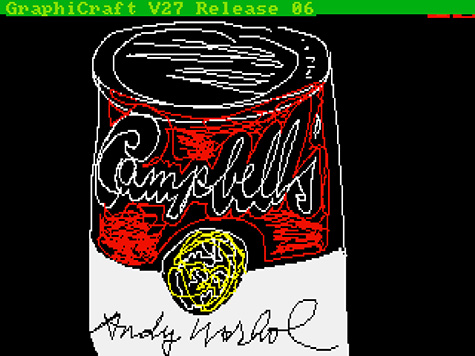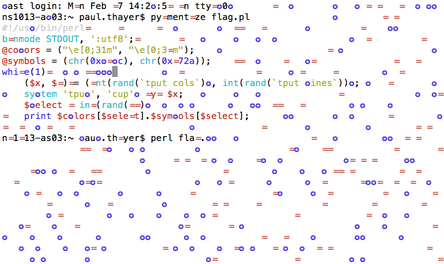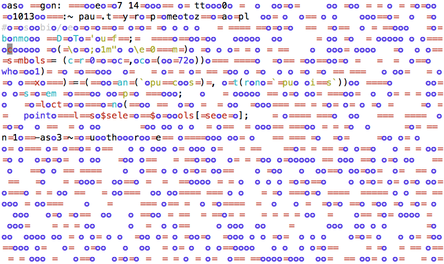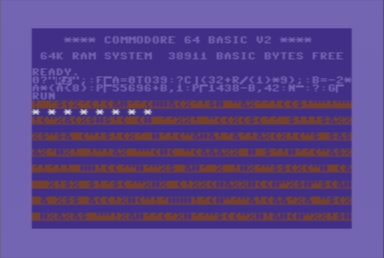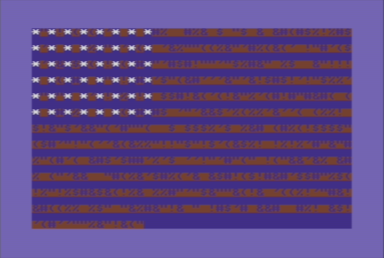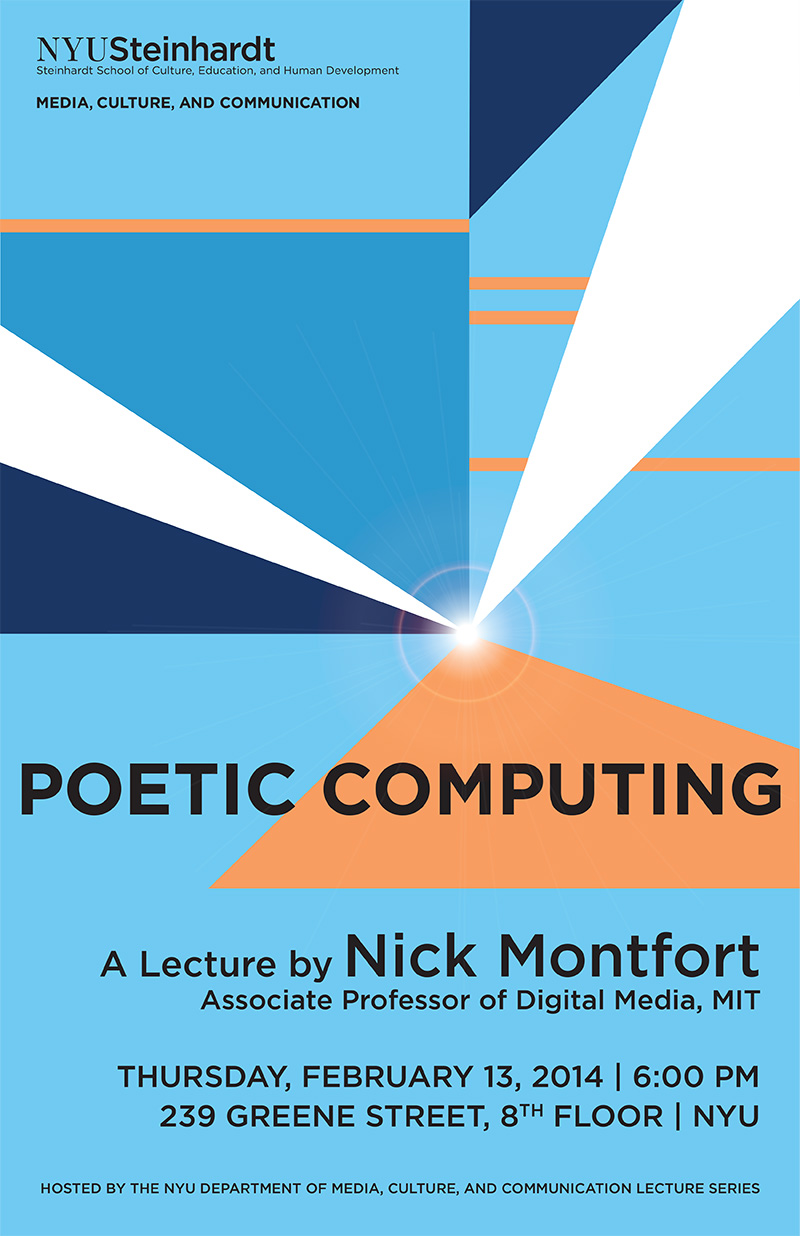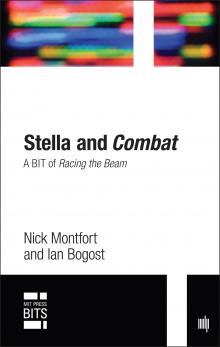The Electronic Literature Organization is delighted to announce two awards to be given this summer; nominations are open now.
>The ELO is proud to announce the ”The N. Katherine Hayles Award for Criticism of
>Electronic Literature” and “The Robert Coover Award for a Work of Electronic
>Literature.” Below is information including guidelines for submissions for each.
>
>http://eliterature.org/2014/04/announcing-elo-prizes-for-best-literary-and-critical-works/
>
>“The N. Katherine Hayles Award for Criticism of Electronic Literature”
>
>“The N. Katherine Hayles Award for Criticism of Electronic Literature” is an
>award given for the best work of criticism, of any length, on the topic of
>electronic literature. Bestowed by the Electronic Literature Organization and
>funded through a generous donation from N. Katherine Hayles and others, this
>$1000 annual prize aims to recognize excellence in the field. The prize comes
>with a plaque showing the name of the winner and an acknowledgement of the
>achievement, and a one-year membership in the Electronic Literature Organization
>at the Associate Level.
>
>We invite critical works of any length. Submissions must follow these
>guidelines:
>
>1. This is an open submission. Self nominations and nominations are both
>welcome. Membership in the Electronic Literature Organization is not required.
>
>2. There is no cost involved in nominations. This is a free and open award aimed
>at rewarding excellence.
>
>3. ELO Board Members serving their term of office on the Board are ineligible
>for nomination for the award. Members of the Jury are also not allowed to be
>nominated for the award.
>
>4. Three finalists for the award will be selected by a jury of specialists in
>electronic literature; N. Katherine Hayles will choose the winner from among the
>finalists.
>
>5. Because of the nature of online publishing, it is not possible to conduct a
>blind review of the submissions; the jury will be responsible for fair
>assessment of the work.
>
>6. Those nominated may only have one work considered for the prize. In the event
>that several works are identified for a nominee, the nominee will choose the
>work that he or she wishes to be juried.
>
>7. All works must have already been published or made available to the public
>within 18 months, no earlier than December 2012.
>
>8. All print articles must be submitted in .pdf format. Books can be sent either
>in .pdf format or in print format. Online articles should be submitted as a link
>to an online site.
>
>9. Nominations by self or others must include a 250-word explanation of the
>work’s impact in the field. The winner selected for the prize must also include
>a professional bio and a headshot or avatar.
>
>10. All digital materials should be emailed to elo.hayles.award@gmail.com by May
>15, 2014; three copies of the book should be mailed to Dr. Dene Grigar, Creative
>Media & Digital Culture, Washington State University Vancouver, 14204 NE Salmon
>Creek Ave., Vancouver, WA 98686 by May 15, 2014. Those making the nomination or
>the nominees themselves are responsible for mailing materials for jurying. Print
>materials will be returned via a self-addressed mailer.
>
>11. Nominees and the winner retain all rights to their works. If copyright
>allows, ELO will be given permission to share the work or portions of it on the
>award webpage. Journals and presses that have published the winning work will be
>acknowledged on the award webpage.
>
>12. The winner is not expected to attend the ELO conference banquet. The award
>will be mailed to the winner.
>
>Timeline
>
>Call for Nominations: April 15-May 10
>
>Jury Deliberations: May 15-June 10
>
>Award Announcement: ELO Conference Banquet
>
>For more information, contact Dr. Dene Grigar, President, Electronic Literature
>Organization: “dgrigar” at mac.com.
>
>“The Robert Coover Award for a Work of Electronic Literature”
>
>“The Robert Coover Award for a Work of Electronic Literature” is an award given
>for the best work of electronic literature of any length or genre. Bestowed by
>the Electronic Literature Organization and funded through a generous donation
>from supporters and members of the ELO, this $1000 annual prize aims to
>recognize creative excellence. The prize comes with a plaque showing the name of
>the winner and an acknowledgement of the achievement, and a one-year membership
>in the Electronic Literature Organization at the Associate Level.
>
>We invite critical works of any length and genre. Submissions must follow these
>guidelines:
>
>1. This is an open submission. Self nominations and nominations are both
>welcome. Membership in the Electronic Literature Organization is not required.
>
>2. There is no cost involved in nominations. This is a free and open award aimed
>at rewarding excellence.
>
>3. ELO Board Members serving their term of office on the Board are ineligible
>for nomination for the award. Members of the Jury are also not allowed to be
>nominated for the award.
>
>4. Three finalists for the award will be selected by a jury of specialists in
>electronic literature; Robert Coover or a representative of his will choose the
>winner from among the finalists.
>
>5. Because of the nature of online publishing, it is not possible to conduct a
>blind review of the submissions; the jury will be responsible for fair
>assessment of the work.
>
>6. Those nominated may only have one work considered for the prize. In the event
>that several works are identified for a nominee, the nominee will choose the
>work that he or she wishes to be juried.
>
>7. All works must have already been published or made available to the public
>within 18 months, no earlier than December 2012.
>
>8. Works should be submitted either as a link to an online site or in the case
>of non-web work, available via Dropbox or sent as a CD/DVD or flash drive.
>
>9. Nominations by self or others must include a 250-word explanation of the
>work’s impact in the field. The winner selected for the prize must also include
>a professional bio and a headshot or avatar.
>
>10. Links to the digital materials or to Dropbox should be emailed to
>elo.coover.award@gmail.com by May 15, 2014; three copies of the CD/DVDs and
>flash drives should be mailed to Dr. Dene Grigar, Creative Media & Digital
>Culture, Washington State University Vancouver, 14204 NE Salmon Creek Ave.,
>Vancouver, WA 98686 by May 15, 2014. Those making the nomination or the nominees
>themselves are responsible for mailing materials for jurying. Physical materials
>will be returned via a self-addressed mailer.
>
>11. Nominees and the winner retain all rights to their works. If copyright
>allows, ELO will be given permission to share the work or portions of it on the
>award webpage. Journals and presses that have published the winning work will be
>acknowledged on the award webpage.
>
>12. The winner is not expected to attend the ELO conference banquet. The award
>will be mailed to the winner.
>
>Timeline
>
>Call for Nominations: April 19-May 10
>
>Jury Deliberations: May 15-June 10
>
>Award Announcement: ELO Conference Banquet
>
>For more information, contact Dr. Dene Grigar, President, Electronic Literature
>Organization: “dgrigar” at mac.com.




